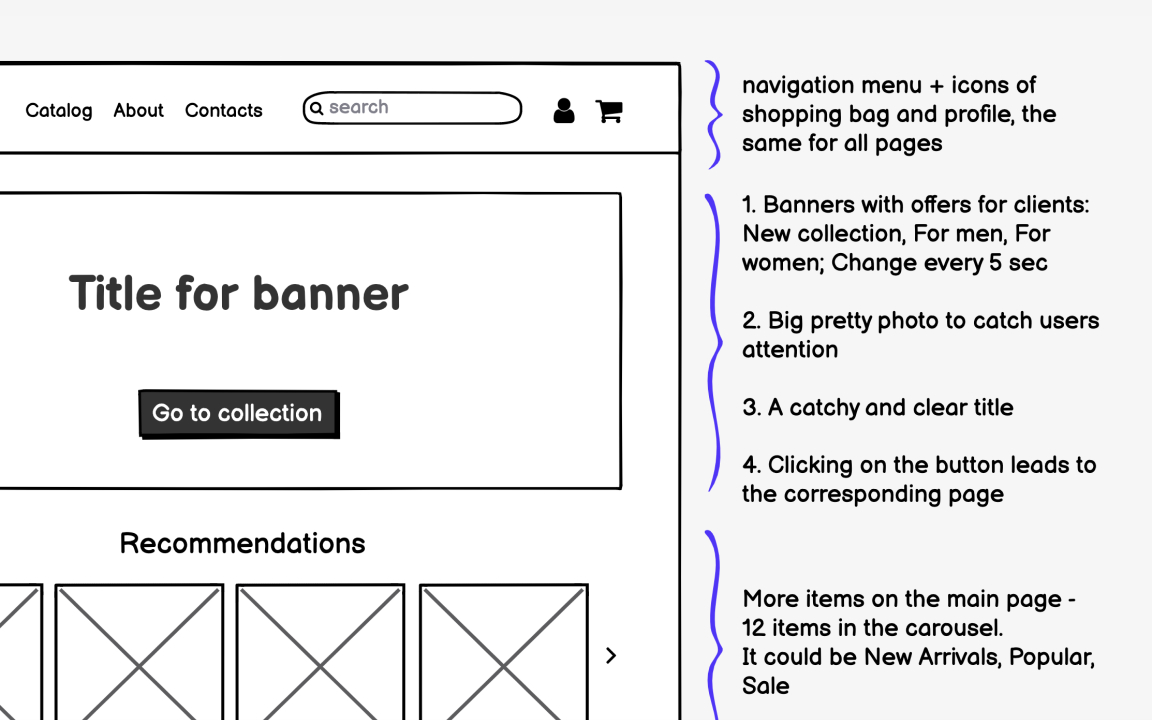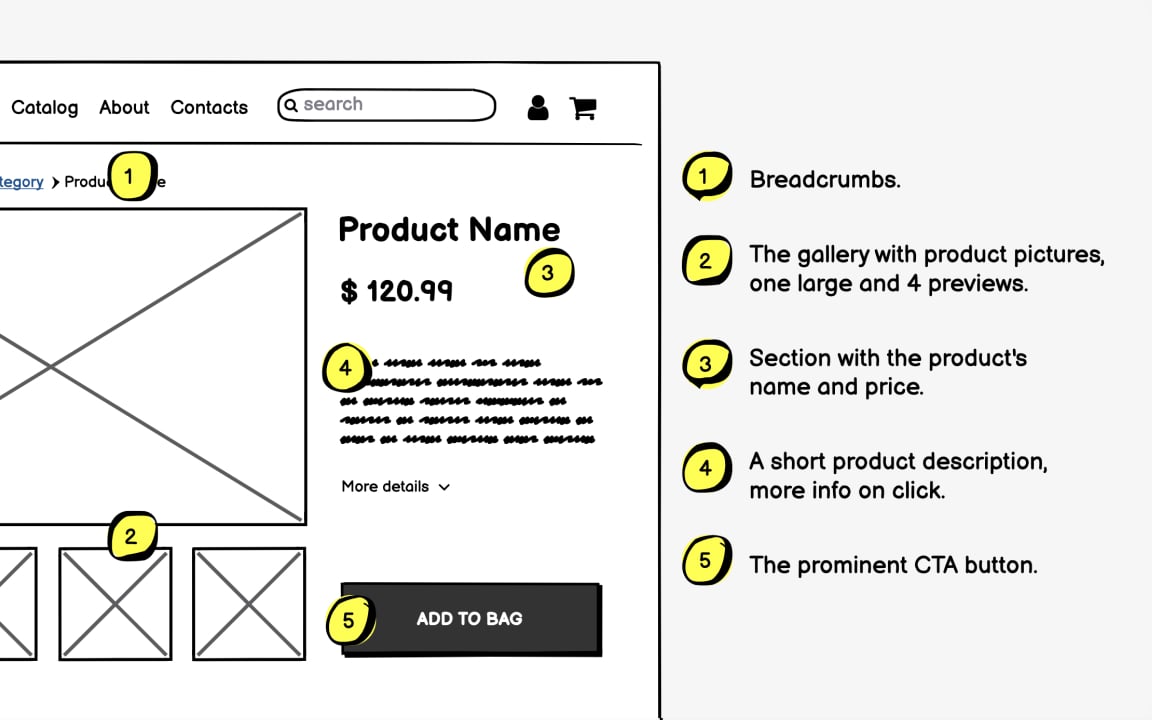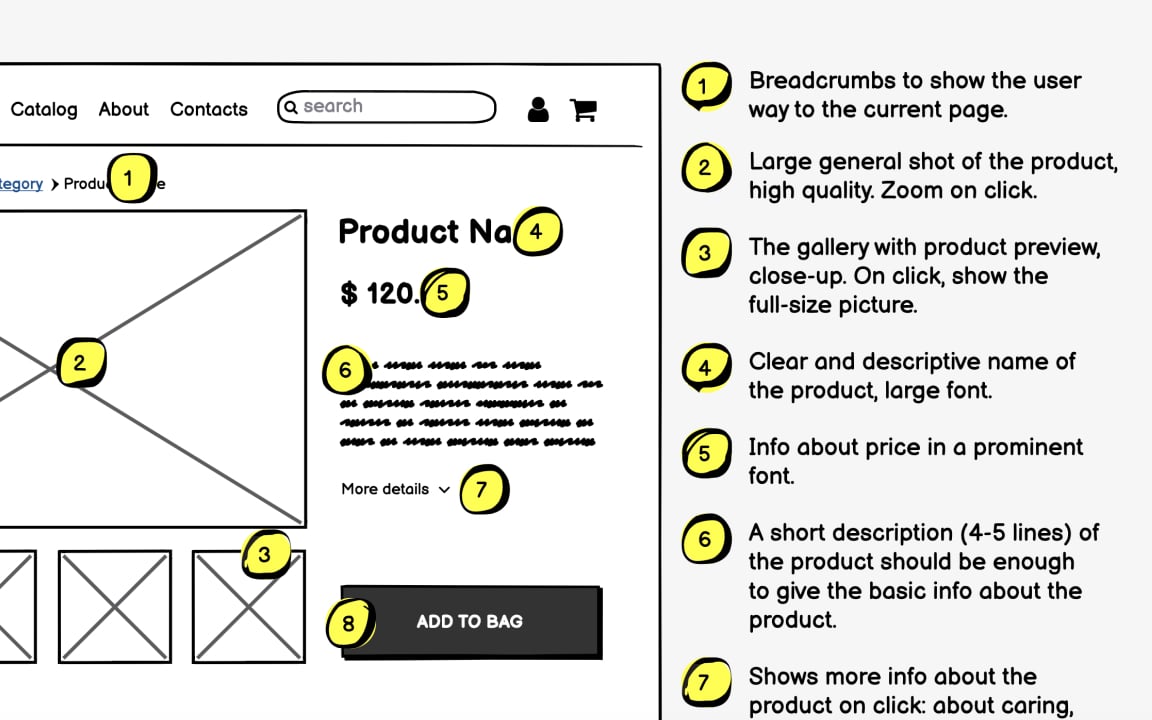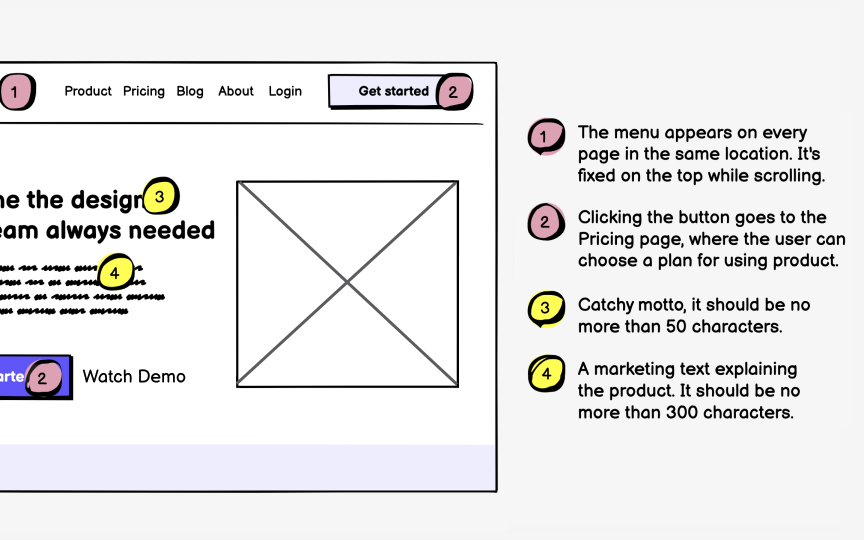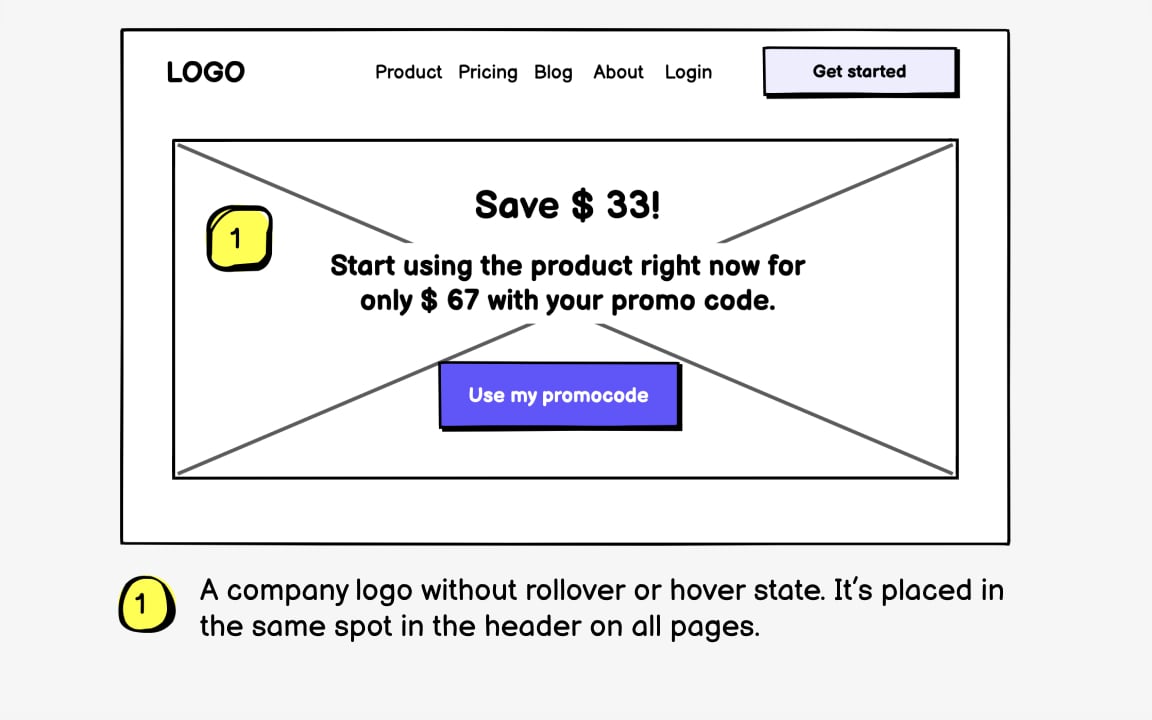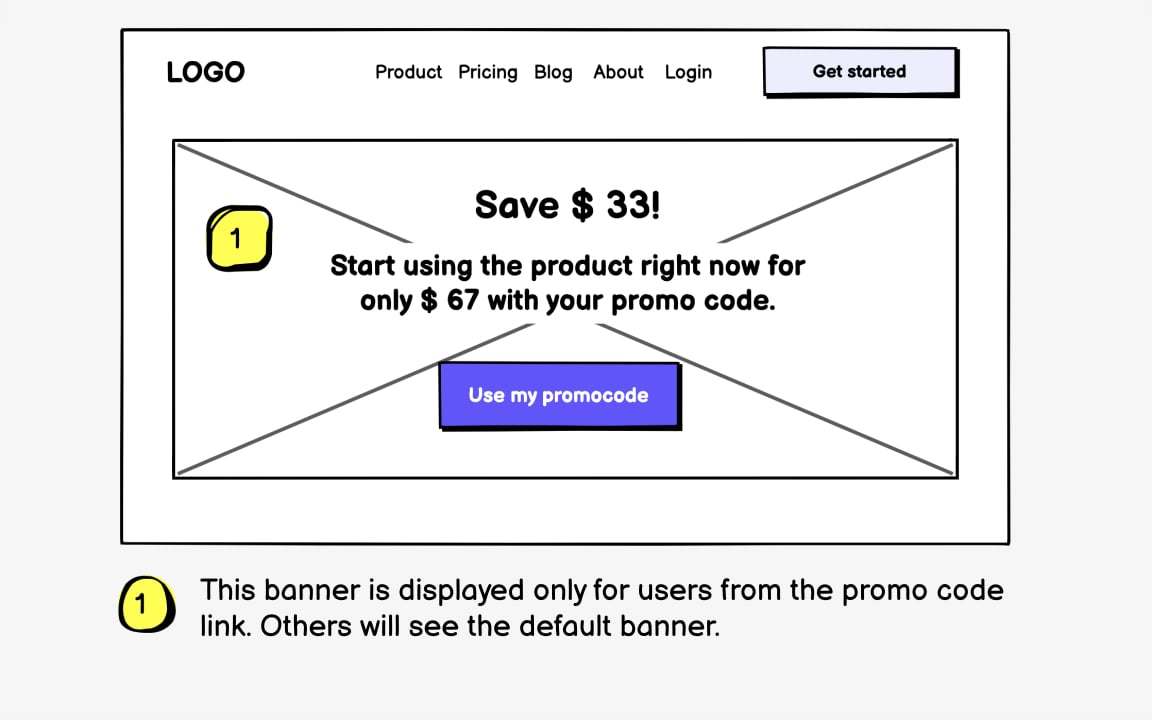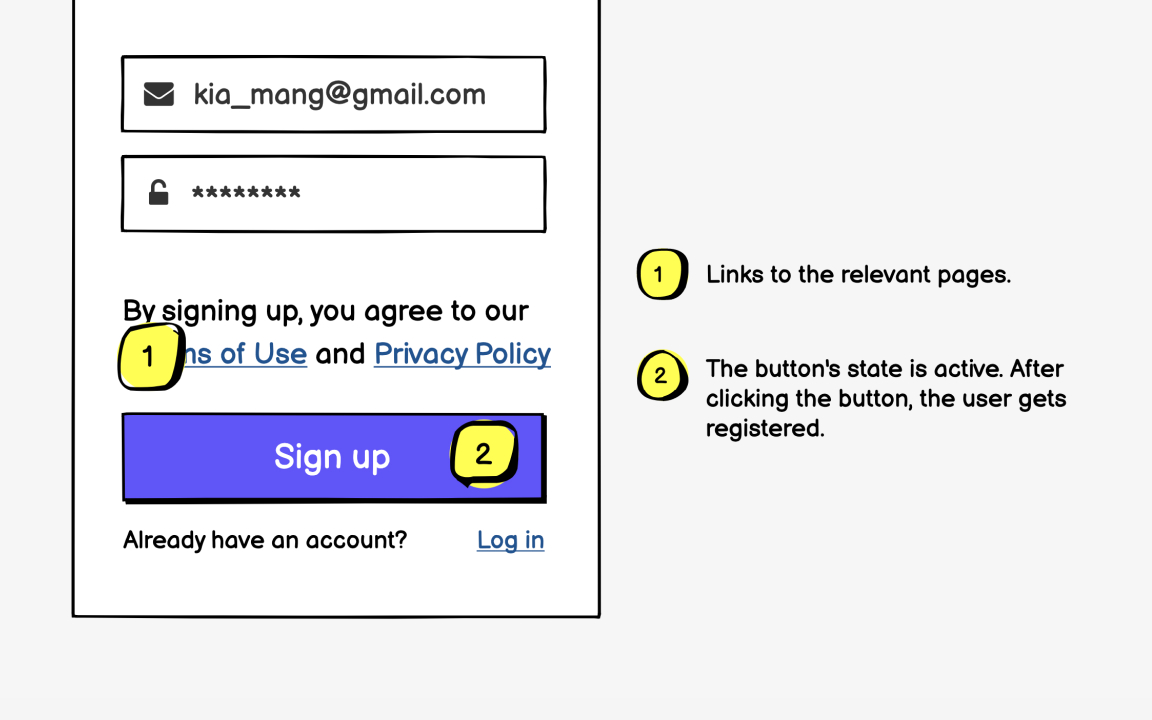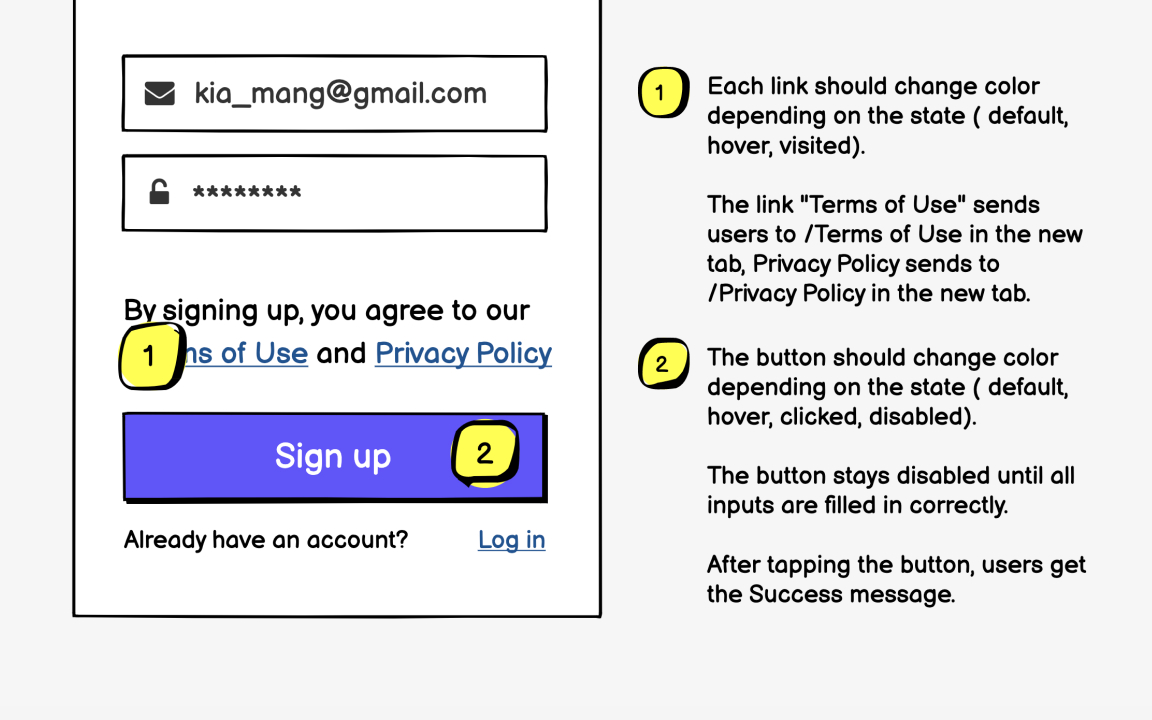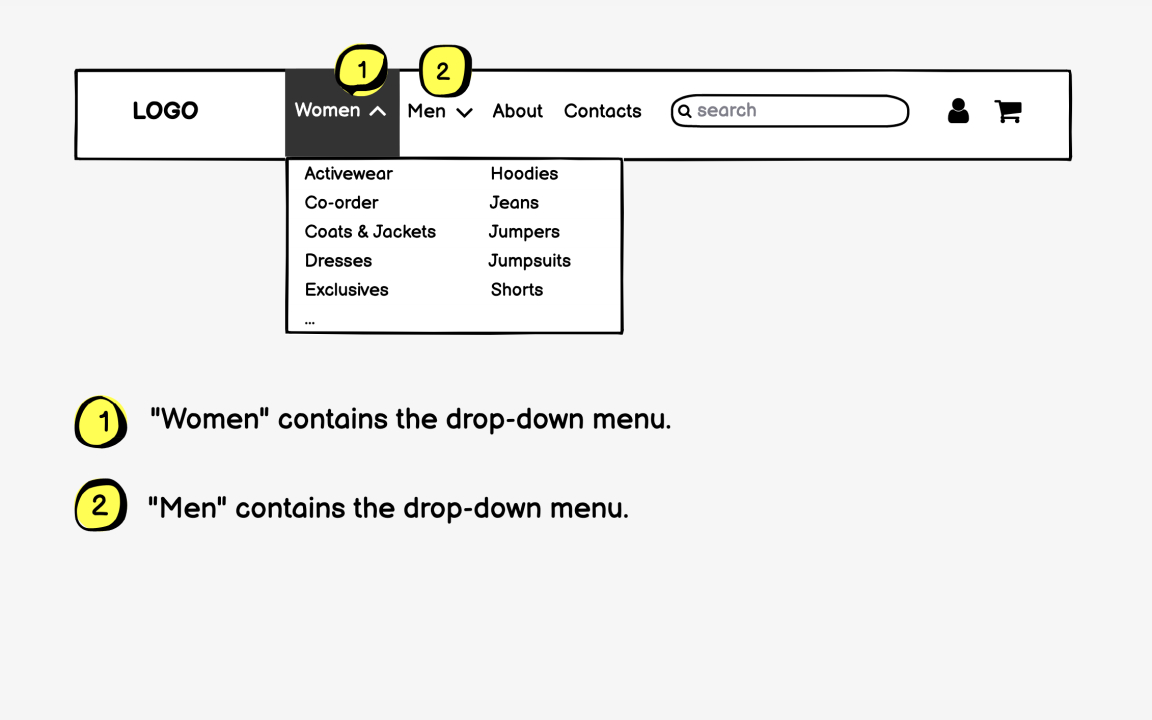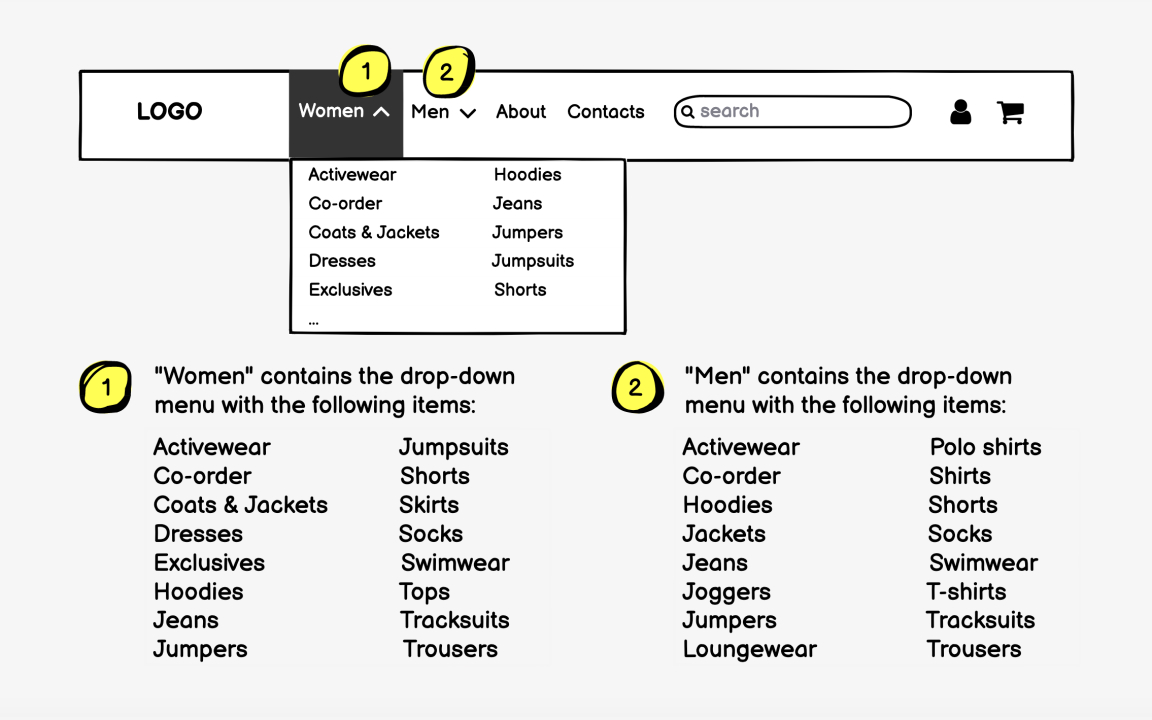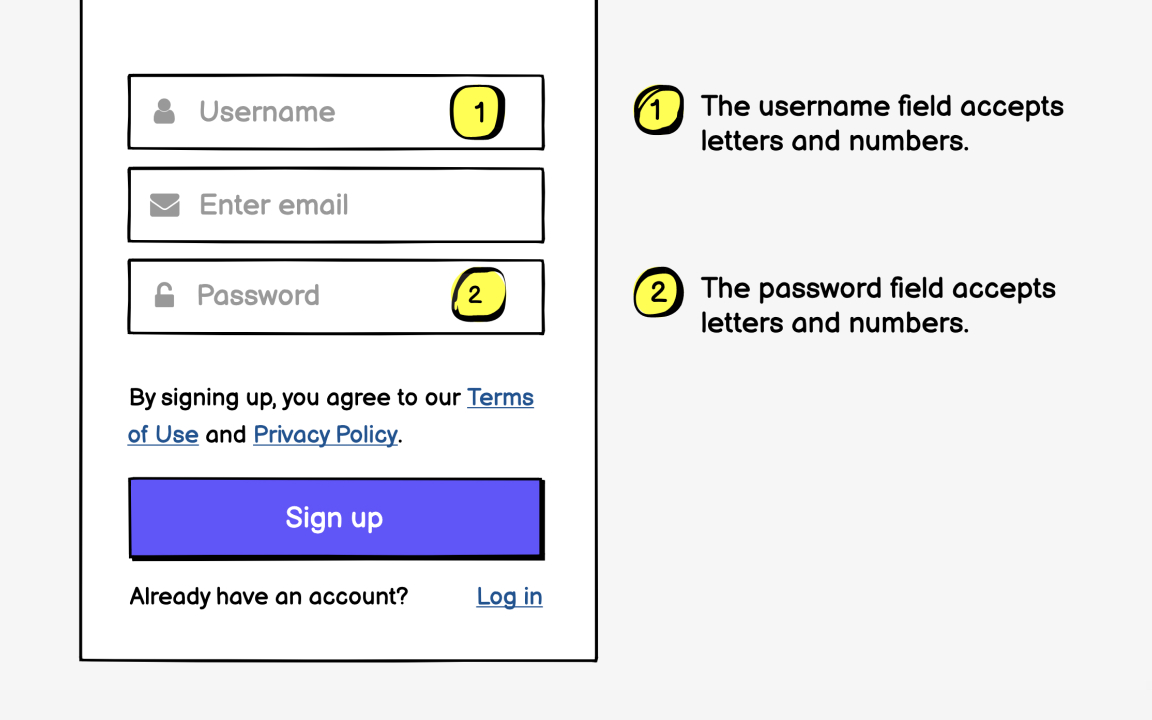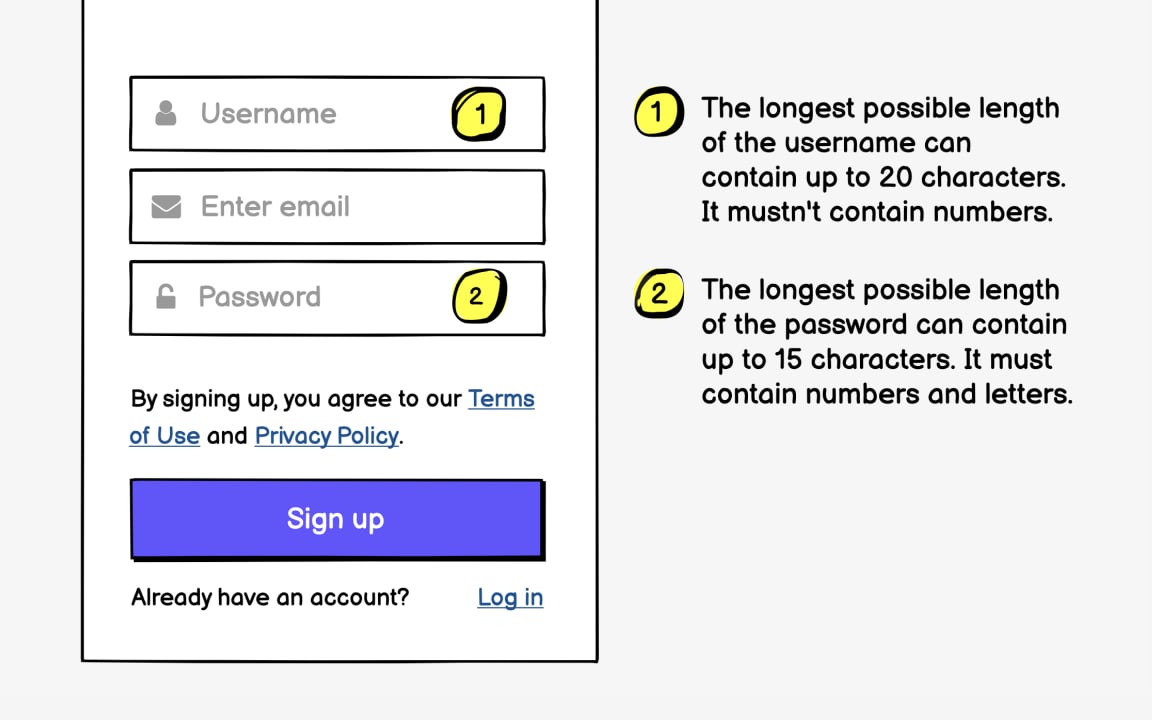Wireframes Annotations & Documentation
Discover effective techniques for adding annotations and documentation to wireframes for proper understanding, consistency, and efficient collaboration throughout the design and development process
Annotations are the notes that go with the wireframe, usually created by the wireframe designer. Their primary purpose is to clearly explain how and why something on the screen should work for anyone viewing the wireframes.
Annotations can include details outside the visuals — design rationale, scenarios, edge cases, interactions, or examples. Consider your job done well if everyone who looks at your wireframe understands how and why your design functions.
Annotations, like any kind of writing, require you to know your audience. Who are these annotations for? People you should consider involving in wireframing include clients, developers, visual designers, and copywriters.
Keep in mind that each party has different expectations from the wireframes:
- Clients want to understand if the design corresponds to their business goals.
- Developers want to see what they have to support and how the product works.
- Visual designers want to see what visual elements need to be on the page.
- Copywriters want to see what they need to write.
And, most importantly, in the future, you will need to remember why you made that form element a checkbox instead of a radio button.
Pro Tip: If you can communicate in person with your audience, consider presenting your wireframes to them. You can use your annotations as talking points and go into more detail if needed.
Annotations provide the information that static wireframes just can't. Usually, they detail how something should work on
The person who creates the wireframe might experience a sort of "expert bias." You know so much about the wireframe that you might assume that everyone who looks at it will clearly understand your ideas. However, others don't have the prior knowledge that you do, and their assumptions about what something does are just assumptions. To help others, add clear information about what you want each element to do.
When you add annotations to a
You can think of annotations in two groups:
- Content notes. These explain the message behind every text or visual element. What should this label tell users? Why does this message appear here? How important is it compared to the rest of the content?
- Functional notes. These show what happens when users interact with something. Does the
button open a menu? Does an error message appear after a wrong input? What changes from one state to another?
Most wireframes use small numbered markers to point to the right spots. Make sure these numbers stand out by adding a bit of contrast. Then repeat each number next to a short explanation at the side or bottom of the
Pro Tip: Be smart about what you put in the wireframe and how. The clearer you make the actual wireframe, the less you will have to explain in annotations.
In theory, any element can be annotated. However, let's not forget about the limits of people's attention. You need to prioritize what has to be annotated and what should be self-explanatory.
One of the types of elements that almost always needs annotation is conditional items, for example, a banner that is only shown to certain users but not others. Without extra information, it's impossible to guess under which conditions it shows. And if the
Users think of interactive elements in terms of "What happens if I tap this?" But people involved in creating the product require more information.
When annotating interactive elements like links and buttons, ask yourself questions like:
- How many states does this element have?
- What triggers the change of state?
- What happens when users click, hover, or tap?
- How are visited links displayed?
- Where are users redirected?
Also include any other information that isn't obvious from the
Other types of elements that require annotations are the elements that can't be fully shown in the
Annotate anything with a business, logical, or technical constraint. For example, full password requirements or the longest possible length of a username.
In cases like this, annotations should capture not only what is being displayed (and where and when) but also why. The more you can document your thought process and the decisions you made, the easier it is to explain your work, justify your choices, or fix it in case you’ve made a wrong decision.
There is a vast difference between an annotation that reads, “Show first 10 new messages,” and one that reads, “Due to possibly hundreds of new messages, only show the first 10.”
There are 2 minds of when to annotate your
We think that you should take the better of both worlds — annotate as you go and finalize annotations after you've finished.
Annotating as you go along and are doing the design helps you think through how something is going to work. It also helps to make sure that you don't forget how you intended something to work or what your thought process was behind a decision. When all is done, edit the annotations to make sure they are easy to understand for others.
Pro Tip: If you have too much text to fit on the side or the bottom of the page, don't be afraid to start a new page and keep going.
Annotating
For example, you might start with a couple of comments about your thought process on a paper sketch. As you move into digital tools, your annotations will become more elaborate. After talking with developers, you might add more technical information.
Here are some suggestions about what you need to concentrate on at different fidelity levels:
- In sketches, add comments on ideas, personas, and scenarios.
- In low-fidelity wireframes, concentrate on initial design decisions and explore various UI options.
- In medium-fidelity wireframes, describe the functionality and layout reasoning.
- In high-fidelity wireframes, detail in-depth functionality,
content and design decisions, and scenario rationale.
Top contributors
Topics
From Course
Share
Similar lessons

Intro to Wireframing

Wireframe Fidelity

